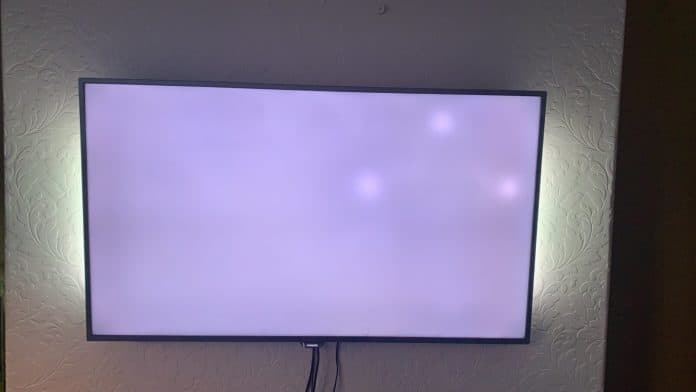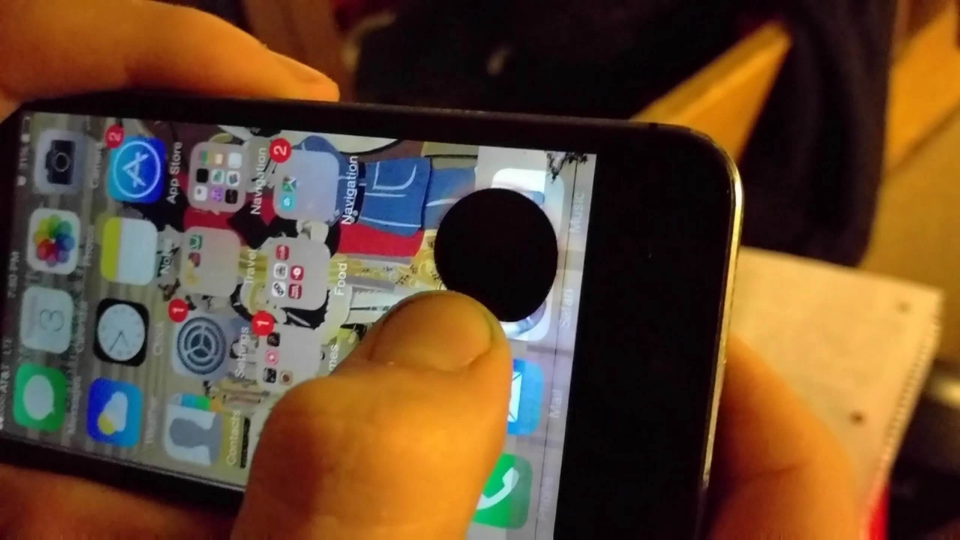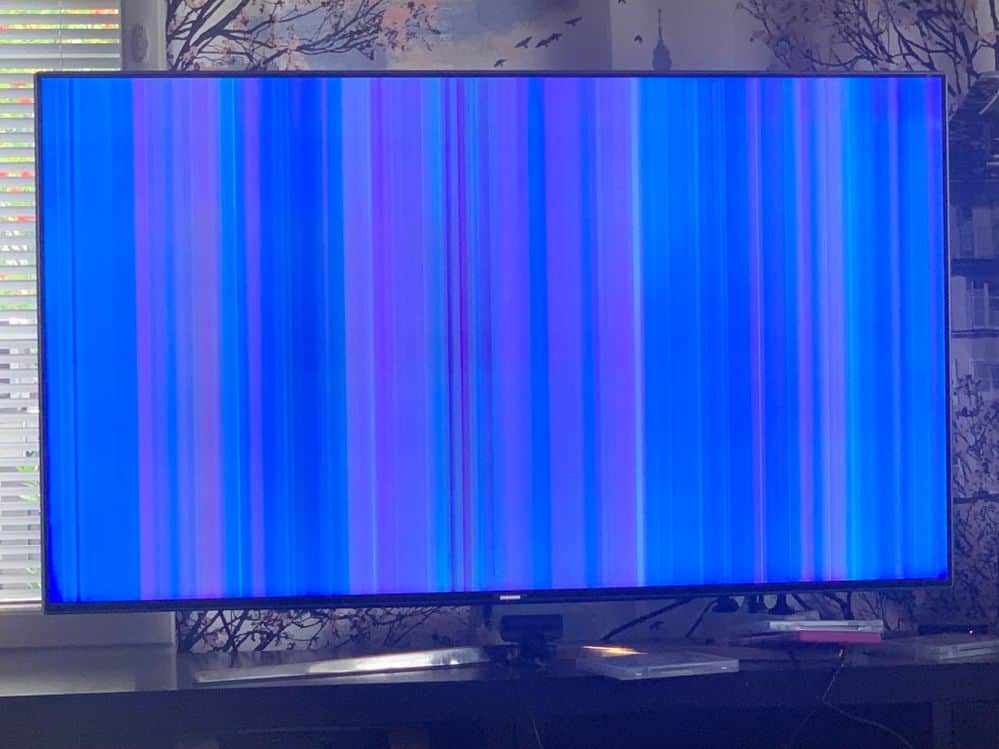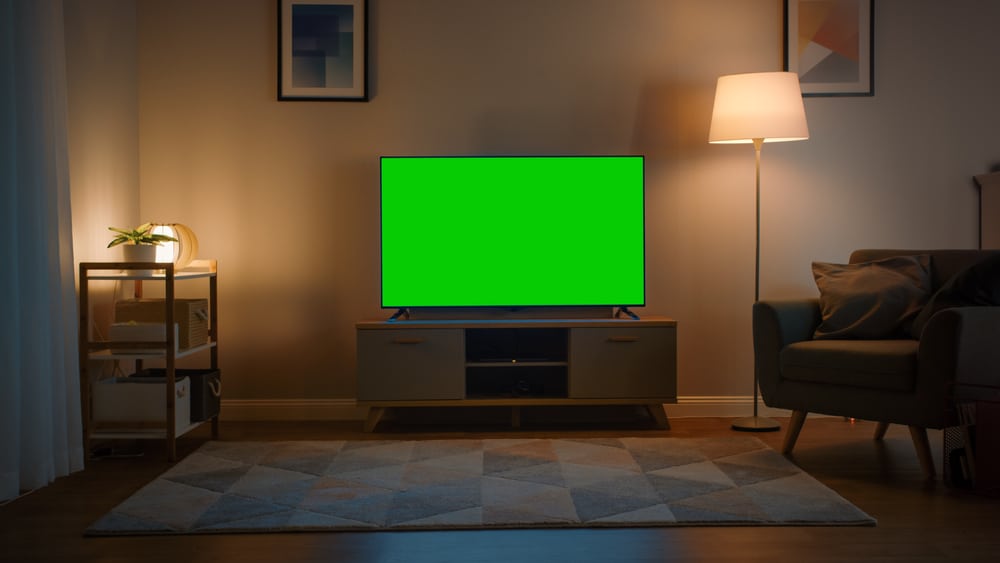Key Takeaways
- Samsung TVs may show white spots due to stuck pixels or hardware issues.
- Repair costs for white spots on Samsung TVs typically range from $200 to $300.
- White spots might be due to LCD damage or displaced LED reflectors.
- Regular maintenance and proper setup can minimize TV display issues.
- Check warranty options before proceeding with costly repairs.
Bright or white spots are a big problem with tv screens, especially on Samsung. And yet, even their formidable LCD tv screens are vulnerable to one of the most annoying TV problems: white spots.
It’s a golden age of literal armchair videophiles, and few companies are as synonymous as Samsung with meeting our demands for visual entertainment.
Setting up your LCD TV can be a lot of hard work. From mounting it away from annoying glares to adjusting image settings to be most pleasing and easy on your eyes, you want to make sure that you can properly relax for your hours of entertainment.
You also want to make sure that you’re not overworking your TV. Those white dots flashing on after you’ve powered up your set can be a serious distraction, especially when they beam over darker images.
More than that, they may reflect a serious issue with your TV.
Your most immediate assumption about dots on the screen may be that they are blemishes on the hardware.
You might not be wrong, but in the case of roughly three small, white circles on the side of your screen, if not more than a dozen throughout, the problem may be deeper.
What could be the fault of high-tech engineering behind this issue? More importantly, how much is it going to cost to fix it?
There are several relatively simple reasons for these issues. Fixing them, however, may be less simple.
Samsung TV White Spots Repair Cost
If your Samsung TV is still showing dodgy pixels, you can always get it repaired. The main thing I would get repaired first is that LCD panel.
As you can see, repairing a Samsung TV screen is not too difficult. However, tracking down a replacement screen can be a bit of a challenge.
The repair costs for a Samsung TV with White Spots would usually range anywhere from around $200 to $300. This is quite pricey, so make sure you read through the whole article before you get it repaired.
This might not even solve your problem, as there could be more serious LED damage behind the white dots. If you want to play it safe, calling a technician may be more cost-effective.
Samsung provides their repair services, which can be especially reasonable if your TV is under warranty.
You can request a home
visit, directly turn your set into a service center, or mail sets that are 32 inches in size or smaller to technical services.
Visit Samsung’s Get Support page for more information. Otherwise, you can contact a local TV repair service that specializes in Samsung products.
What Are the Bright Spots on My TV?
The white spots on a TV are most likely stuck pixels. This usually isn’t that serious of a situation and can be dealt with through serious troubleshooting.
However, if you see black spots on the screen, your issue may be dead pixels. More on that later.
There is a common misconception that white spot pixelation issues in Samsung TVs stem from LED reflectors. This can also cause lines on your Samsung TV.
Samsung does not use this technology for its LED sets. Stay tuned if you are having a problem with a TV that uses reflectors (i.e., LG).
As for Samsung, pixelation damage may be caused by extended activity in your television set, leading to overprocessing and overheating.
Screen time is as much for the screen’s health as it is for yours. Of course, overheating may also be due to your TV’s climate, particularly during the hotter seasons.
There are also fewer technical reasons for white spots, both in software and in hardware. Regarding the former, you can relax the processing power of your TV by adjusting image settings.
On the other hand, spots may simply be blemishes on the back of your screen.
White Spot on TV
Most people would just see white pixel-looking things on their screen, but a few users have been reporting that they have seen white spots on their Samsung TV as well.
The lightweight dots and a lot of other users have two white lights on their screens. This happens because the LCD panel on the tv is damaged.
Because of this, you may need to repair it, which I will be getting into down below, or replace the LCD panel by yourself.
I wouldn’t recommend doing this yourself unless you have dabbled in electronics before, but if you’re feeling a bit confident, you can always watch a quick youtube video.
White spots on your tv usually happen because your tv has been hit in a certain area. If you can think back to a time when something hit your tv or if this happened just now, then this explains it.
Clean the Back of the Screen
It is always important to practice good hygiene with your TVs. We all know that we need to clean dust and debris off of our screens from time to time.
But then, we all also know that we should be flossing our teeth regularly. Of course, as with black spots on your teeth, white spots on your TV screen can mean getting invasive with your upkeep.
To thoroughly clean your LCD screen, you first have to remove it from the set. You may want to move everything to a clean working space.
Gently place the TV on the ground, facedown, and unscrew the back case to expose the monitor inside. Afterward, gently remove the small screws along those edges.
This will require removing the TV’s speakers from the edge back panel. You should then be able to pop off the frame surrounding the screen.
After you have removed the screen as carefully as possible, you should be able to see any smudges or blemishes that may have snuck into the back of it.
If so, gently wipe the screen down with a microfiber cloth lightly sprayed with distilled water. Some people have recommended alcohol, but I say better safe than sorry.
You may have to use a cotton swab very lightly to remove some of the more stubborn spots. After you’re done cleaning, carefully put your TV back together.
Just for good measure, give the front of your screen a good cleaning as well. Feel free to be more vigorous than you were with the back, but still be careful with this highly sensitive equipment. If the white spots are still there, then the issue is more than cosmetic.
Samsung tv has circles on screen
Adjust Your TV Settings
Again, the more serious cause for blemishes on a Samsung TV is damaged pixels stemming from overprocessing.
When setting up your TV, it is advised to adjust image settings to ease your set’s function. Backlighting requires a lot of power and should be kept relatively low if you hope to make a TV last.
If the damage is done on pixelation, there is still hope. If you are planning on doing serious maintenance with your image settings, it is recommended that you put your TV in the picture Test mode.
Click the Home button on your remote and go to your settings. From there, you should have a menu for Picture or Display.
This will give you the option of changing to Picture Test mode, which displays the image of the color bars on your main screen. The color bars image gives you a more vivid look at an image’s color and lighting.
You have free reign to adjust the settings of a TV’s picture until the white dots subside, though your best bet is the backlighting setting.
If there are still dots on your screen after all these experiments, I’m afraid the next step may be costly.
Replace Your TV Screen
If pixels on your TV screen are too damaged, then it may be time to replace the screen itself. If you have managed to figure out how to clean the back of a Samsung TV screen, though, replacing one shouldn’t be too difficult. Just to be sure, let’s review it in step-by-step detail.
Step 1: Remove the screws from the back panel of your TV, then remove the case itself to expose the inside of the monitor.
Step 2: Remove the speakers from the TV on the monitor. There should be no need to mess with such sensitive equipment on the body as the motherboard.
Step 3: Remove the small screws along the edges of the TV set to dislodge the screen’s frame.
Step 4: Very carefully remove the television’s screen and place the new one in its stead. Make sure that it is clean and undamaged. From there, put your TV back together.
I also suggest that if you’re seeing green lines on your tv you should replace your screen as it is most likely broken.
How Much Does It Cost to Remove White Spots?
In the United States, the current service rate for Samsung TV screen replacement is around $200. That is as low as roughly $60 and as high as well over $300.
It all depends on the size and age of your model. Be prepared to pay more if the white spots reflect a more serious issue.
If you are confident that the white spots are the cause of damage to the backlight of your LCD unit, that is cheaper to replace.
Backlight replacement service may only cost $100 or so. You can check by removing your TV’s screen and the white diffuser sheets separating it from the LED light array.
Again, this is all specifically aimed at fixing the white spots on Samsung LCD TV screens.
The more common cause of this issue in Samsung’s competitors is problems with LED light reflectors. If you have an LG LCD TV, for example, then maintenance on stuck pixels can be easier.
Why Are There White Spots on My LG TV?
LED reflectors are small bulbs that redirect an LCD TV’s backlight to illuminate an image. Without them, the light is directed forward, thus resulting in small lapses in the image’s pixelation.
The most common malfunction in reflectors is that they have simply fallen out of position. It is usually a manufacturing error, but overheating in your TV can loosen the adhesive holding the bulbs in place.
To fix the LED reflectors in your LG TV, the steps are fairly similar to those in replacing a Samsung TV screen. If you have skimmed through the article up to this point, then let’s review it once more.
Step 1: Remove the screws from the back panel of your TV, then remove the case itself to expose the inside of the monitor.
Step 2: Remove the speakers from the TV on the monitor. There should be no need to mess with such sensitive equipment on the body as the motherboard.
Step 3: Remove the small screws along the edges of the TV set to dislodge the screen’s frame.
Step 4: Very carefully remove the television’s screen and carefully set it aside. Remove the diffuser sheets to reveal the LED light array and the reflectors within.
Step 5: Collect the displaced reflectors, place a small amount of glue on the bottom of them, and place them in their designated holes.
Be sure to check the security of the other reflectors. With its LED reflectors back in place, your LG TV should be cleared of its white spots.
Again, though, this is considering that your issue is stuck pixels. If you are dealing with black spots, you cannot simply follow the previous instructions.
What Do Black Dots on My TV Mean?
Black spots on your TV may be a much more serious issue. At best, it means that your TV screen has accumulated an excess of debris from exposure to the elements.
Even dirt on the surface of your screen can gradually erode pixelation, so be sure to clean your TV regularly. The more likely, more extreme case with black spots is dead pixels caused by power connection failure.
This problem is also known as “hot pixels”, but I’m afraid such terminology doesn’t fully reflect the seriousness of this technical issue. You can apply pressure to or lightly thump your TV to help spark a connection.
A connection may even be made on its own from time to time. Alas, there is no long-term fix for dead pixels.
In the case of black spots caused by dead pixels, you will have to contact a manufacturer for support services, or even replace the TV.
More Common problems with TV Displays
Black Lines on TV Screen
Now we’re going to go into the different color lines you can see on your screen. The main color lines people usually report to us are black, purple, and green lines on their screen.
One of the reasons these colors are the most popular is because these are the primary colors that are used to make up images on your TV screen.
The colors you say aren’t an indicator of what is wrong with your tv screen. Black lines are the most popular because that is the colors that are mostly used.
You can’t diagnose your tv issues with the color that is showing but you can diagnose it a different way and I will be showing you how to do this down below.
A few of the less popular colors you will see on your TV screen are Gray, purple and white lines on the bottom of your screen.
If you notice the lines on the bottom of your TV screen then it’s an indicator that there is damage to the bottom of your screen. At a push, black lines usually indicate that there has been damage to your tv screen.
Horizontal and vertical lines on TV Screen
If you’re seeing certain lines on your tv screen then the reason why is because there is a graphic failure. This may be because there is an issue with your screen or with your cables.
Due to this reason, you will see a reduced image quality and reduced graphics on your screen. The only way to overcome this is to pinpoint the actual reasons why there are lines on your screen.
Lines will usually be horizontal if the images on your screen can’t load properly. If there are vertical lines on your smart tv screen, it might be due to input cables.
If the cable is not properly inserted into your smart TV, signals will not be able to translate properly from the smart hub and Smart TV. Replugging the cable might fix the issue but I will get into this down below.
When the image size is wrong on your tv this will affect how images will appear on your screen. Images may become distorted and lines may appear.
If this image is too big or small for the smart tv’s resolution it will cause problems. Fixing the resolution will fix this which is what ill get into down below.
Other things like firmware and your actual screen being damaged may cause horizontal or vertical lines to appear only on our screen.
A damaged tv screen will usually be what causes lines on your Plasma or Qled TV. This can happen on any range of TVs.
Conclusion
In an age of elevated standards for entertainment, especially at home, high-quality television-viewing experiences are becoming essential.
Consumers work hard to make sure that they have a TV set that is valuable, durable, and, above all, good-looking.
As a consumer, you owe it to yourself to not simply set up your television and its image settings if you’re hoping for long-term performance.
Keep your sets clean and cool, and limit screen time for the sake of your and the television’s health.
Unfortunately, one is bound to run into such common television equipment issues as white spots on the screen.
If you are a Samsung user, then you may be able to wipe these blemishes off of the screen, albeit with extreme intrusion and care with your set.
If the spots are due to stuck pixels, then a screen replacement may be needed. It is hard for a consumer to track down a replacement screen, contact Samsung’s repair services or a local independent technician for a quote.
To that point, check on your product’s warranty. For LG users, white spots are likely due to displaced LED reflectors.
Disassemble your TV carefully, as if you were replacing the screen, and gently glue these reflectors back into place. Of course, if you are dealing with black spots, then you are probably dealing with dead pixels.
This can be a serious issue that will require support from the manufacturer, if not a new TV outright. At the very least, it could be debris that calls for intensive cleaning.
In any case, do pay attention to the blemishes on your screen. They are hard to ignore anyways, but they may be a more serious dilemma in your relaxing at-home entertainment than they appear.






